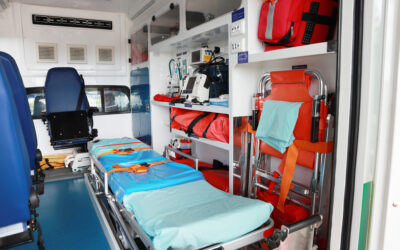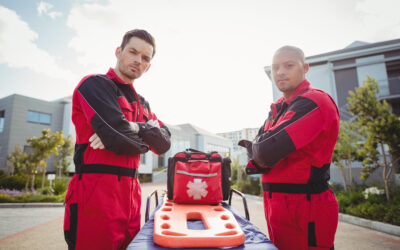In the realm of firefighting, where we brave the flames to save lives, a new battlefront has emerged – the intersection of homelessness and addiction. As firefighter/paramedics on the front lines, we have witnessed firsthand the devastating impact of addiction among the vagrant population in our communities. I want to shed light on those agencies and fire departments that are fighting back through the transformative use of buprenorphine/naloxone (Suboxone) in treating addiction among the homeless.
Homelessness is a struggle that often conceals a more insidious foe – addiction. The streets become a silent war where some individuals fight not only for shelter and food but also against the grip of substance abuse. Studies show that mental health disorders and substance abuse are more prevalent in those experiencing homelessness than those with stable living conditions.
It’s important to understand that addiction among people experiencing homelessness can be the primary cause of destitution or a coping mechanism that started because of poverty. While alcohol and narcotic deaths occur, the opioid epidemic has increased death rates among the homeless. A 15-year study conducted in Boston, Massachusetts, found that 1 in 4 homeless people died from drug overdose.
So, how can first responders help treat addiction? Fire departments, traditionally known for responding to emergencies, have evolved to confront the root causes of crises, and addiction among the homeless is a battle we’re not shying away from.
A New Option for Treatment
In our journey to combat addiction, one tool has emerged as a beacon of hope – buprenorphine/naloxone. Among all the pharmacological treatments available to us, this medication – combining the power of buprenorphine to ease withdrawal symptoms and cravings with naloxone to prevent misuse – has become a game-changer in our efforts to extend a lifeline to those struggling on the streets. As a firefighter and a paramedic, being part of this initiative is more than just responding to calls; it’s about saving lives beyond the immediate emergency. Instead of waiting for a life-or-death situation, we can aid people in a calmer, non-emergency setting where we can engage the patient and work with them to get them headed in the right direction.
We’ve long been trained to respond to fires, accidents, and medical emergencies, but the opioid epidemic has added a new layer to our role as first responders. Historically, we’ve been reactive to these situations, but given the magnitude and unwavering progressiveness of the opioid crisis, we need to take a proactive approach. Now, we’re equipped with the tools and knowledge to address addiction in a different setting than our typical medical emergency. Through outreach programs, we are on the front lines of breaking the cycle of addiction among the homeless. After all, these individuals are on a path where we will inevitably be called to assist them at some point. By addressing the problem before the emergency, we can get them help early with a much better chance of a positive outcome.
Implementing This Homeless Addiction Treatment Plan
Implementing buprenorphine/naloxone programs within fire departments and EMS facilities requires a commitment to training and collaboration. Firefighter/paramedics are not just learning a new way to treat our community members; we’re gaining insights into the complex nature of addiction and developing the skills to approach individuals with empathy and understanding.
Collaborations with healthcare professionals and addiction specialists strengthen our ability to provide comprehensive care. It’s not just a matter of handing out this medication and going on our way. Once we’ve made contact with the patients, it is important to provide them with follow-up resources such as addiction treatment programs and specialists. Given these individuals’ situations, providing them with additional resources not only gives them more opportunities for treatment but also shows them compassion that they likely lack in their lives. We motivate them to seek treatment, knowing that there are people out there who care about them.
Some examples of outreach programs and the use of buprenorphine/naloxone in pre-hospital settings include:
- Contra Costa Pilot Evaluation
- Seattle Fire Department Initiative
- New Jersey Buprenorphine Field Initiation of Rescue Treatment by EMS (Bupe FIRST)
- Austin-Travis County EMS Buprenorphine Bridge Program (Texas)
- Hennepin MI Healthcare Emergency Medical Services
Our mission extends beyond the immediate emergency— it’s about reducing harm and rebuilding lives. Buprenorphine/naloxone is not just a medication; it’s a tool for harm reduction, providing a bridge to long-term recovery. Even though it is outside the normal roles and responsibilities of a firefighter/paramedic, seeing individuals take steps toward healing, stability, and life beyond addiction is a source of immense pride and motivation.
In the world of firefighting, where every call is a chance to make a difference, the use of buprenorphine/naloxone has become a powerful tool in our arsenal. It’s a testament to our commitment as firefighters to extend our reach beyond the flames, addressing the complex challenges of addiction among the homeless. The only constant in the fire service is change, and as we continue this journey, we’re not just responding to emergencies; we’re igniting sparks of hope, proving that firefighter/paramedics can be instrumental in turning the tide against addiction, one life at a time.
LogRx is a medication tracking & management system – created by first responders, for first responders – that can be used on mobile devices in the field and even when offline. It is a mobile, tamper-evident and simple way to track every drug, making field personnel’s job easier and more efficient. By ditching the outdated paper and pen equipment and drug tracking system, LogRx uses digital and cloud-based technology that reduces staff time, increases efficiencies, and improves accuracy and accountability, in essence, providing you with another person to do your inventory management. LogRx can be updated to include new drug therapies, such as the use of buprenorphine/naloxone in the treatment of drug addiction. Reach out now to see if LogRx is a good match for your team.






